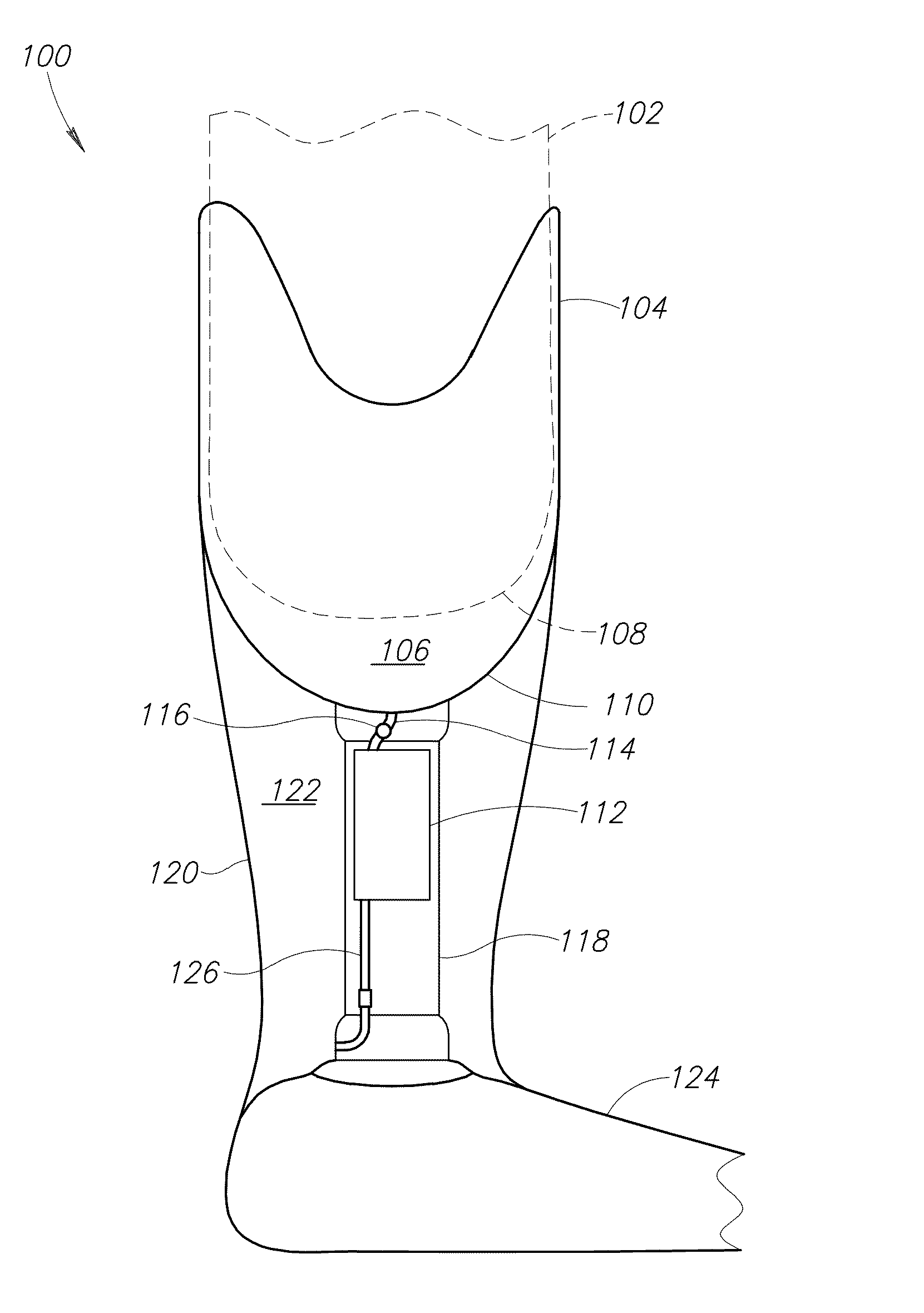Pump system for prosthesis
a pump system and prosthesis technology, applied in the field of prosthetic pump systems, can solve the problems of slipping or undesired movement of prosthesis relative to limbs, pump systems have limitations compared to more conventional, non-vacuum type systems, and still have various versatility and performance limitations, so as to minimize undesired size changes of residual limbs and increase comfort
- Summary
- Abstract
- Description
- Claims
- Application Information
AI Technical Summary
Benefits of technology
Problems solved by technology
Method used
Image
Examples
Embodiment Construction
[0029]This disclosure, in general, describes a new and improved vacuum pump system that provides enhanced suspension and, in turn, a more effective and efficient prosthetic limb application. The pump system may advantageously provide an amputee with a safer and more comfortable fitting prosthesis that may have better proprioceptive control and feel as though the prosthesis is an extension of the wearer's own body.
[0030]In one embodiment, a prosthesis integrates a socket, circuit, vacuum pump system, pylon, and power means while incorporating acoustic dampening and data collection capabilities. The processed data may permit a better fit of the prosthesis, for example tailored for each individual wearer. Further, the pump system includes a means for actively altering a vacuum pressure, in which such alterations may be initiated by the wearer, a prosthetist, a control system corresponding to environmental changes, or any combination thereof. Preferably, the pump system is sufficiently ...
PUM
 Login to View More
Login to View More Abstract
Description
Claims
Application Information
 Login to View More
Login to View More - R&D
- Intellectual Property
- Life Sciences
- Materials
- Tech Scout
- Unparalleled Data Quality
- Higher Quality Content
- 60% Fewer Hallucinations
Browse by: Latest US Patents, China's latest patents, Technical Efficacy Thesaurus, Application Domain, Technology Topic, Popular Technical Reports.
© 2025 PatSnap. All rights reserved.Legal|Privacy policy|Modern Slavery Act Transparency Statement|Sitemap|About US| Contact US: help@patsnap.com



